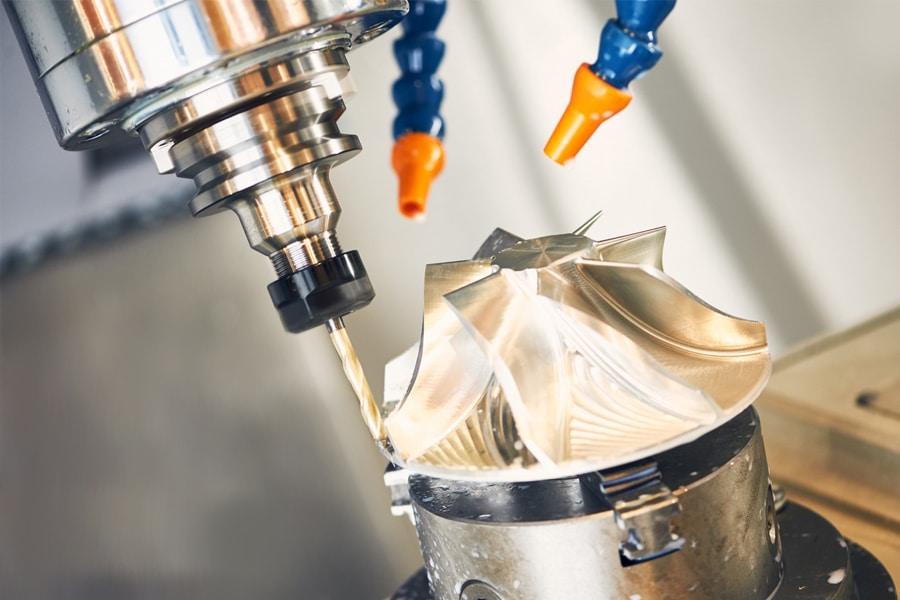CNC machining with AI features lots of advantages over traditional ways. this article will walk you through these.
CNC machining, short for Computer Numerical Control machining, is a manufacturing process that uses computerized systems to control machine tools and fabricate parts from various materials. Artificial intelligence (AI) can be incorporated into CNC machining to enhance its capabilities and streamline the manufacturing process.
Here are some ways AI can be utilized in CNC machining:
- Optimized toolpath generation: AI algorithms can analyze the part design and material specifications to generate optimized toolpaths. The AI system can evaluate multiple parameters like cutting speed, tool engagement, cutting direction, and more to improve manufacturing efficiency and reduce cycle times.
- Predictive maintenance: AI algorithms can continuously monitor real-time data from sensors embedded in CNC machines to predict maintenance requirements. By analyzing performance trends, AI can predict machine failures, allowing operators to proactively schedule maintenance, reducing unplanned downtime, and optimizing machine utilization.
- Quality control and inspection: AI can be used to automate the inspection process by analyzing data from cameras and sensors integrated into CNC machines. The AI system can compare captured images or measurements against the design specifications, identifying any defects or deviations in real-time.
- Process optimization: AI can learn from past machining data and simulate different machining strategies to optimize the manufacturing process. By continuously analyzing and adjusting variables such as tooling, cutting parameters, and feeds and speeds, AI can improve productivity, precision, and surface finish.
- Intelligent scheduling: AI algorithms can optimize production schedules by considering multiple criteria like machine availability, tool availability, part priorities, and delivery deadlines. The AI system can dynamically adjust the production plan, reducing bottlenecks and optimizing resource utilization.
- Material waste reduction: AI can analyze data from previous machining operations to optimize material usage. By suggesting improvements in material placement, nesting, and manufacturing parameters, AI can minimize material waste and optimize material yield.
- Adaptive machining: AI can enable machines to adapt in real-time to changes in material properties or tool wear. By continuously monitoring data during machining operations, AI can dynamically adjust cutting parameters to compensate for variations, ensuring consistent part quality.
Incorporating AI into CNC machining can significantly increase efficiency, improve part quality, and reduce overall production costs by enabling optimization and automation capabilities that go beyond human capabilities.
AI-powered tools and machines
AI-powered tools and machines refer to devices and equipment that integrate artificial intelligence technology to enhance their functionality and capabilities. These tools and machines can perform tasks and make decisions autonomously or with minimal human intervention.
Robots: AI-powered robots can perform a wide range of tasks, such as industrial manufacturing, healthcare assistance, and even household chores. These robots use AI algorithms to process information from their surroundings and make decisions accordingly.
Autonomous Vehicles: Self-driving cars and trucks are examples of AI-powered machines that use AI algorithms to perceive the environment, navigate roads, and make driving decisions without human intervention.
Virtual Assistants: AI-powered virtual assistants, like Siri and Alexa, use natural language processing and machine learning techniques to understand and respond to user queries and commands. They can perform tasks such as setting reminders, answering questions, and controlling smart home devices.
Image Recognition Systems: AI-powered image recognition systems can analyze and interpret images and videos to identify objects, people, or specific patterns. These systems are used in various fields, including security surveillance, medical diagnosis, and manufacturing quality control.
Chatbots: AI-powered chatbots use natural language processing and machine learning algorithms to simulate human-like conversations. They can provide customer support, answer frequently asked questions, and even assist in basic troubleshooting.
Personalized Recommendation Systems: AI-powered recommendation systems analyze user preferences and behavior to provide personalized suggestions. These systems are used in e-commerce platforms, streaming services, and social media platforms to enhance user experience and engagement.
Predictive Maintenance Systems: AI-powered predictive maintenance systems analyze large amounts of data from machines and identify patterns that can predict potential equipment failures. This helps in scheduling proactive maintenance and reducing downtime.
AI-Enhanced Medical Devices: AI is being integrated into medical devices such as diagnostic tools, wearable devices, and robotic surgical systems. This enables more precise and accurate diagnostics, real-time monitoring, and minimally invasive surgeries.
Overall, AI-powered tools and machines aim to automate and improve efficiency, accuracy, and decision-making in various industries and domains. They have the potential to transform numerous sectors by augmenting human capabilities and providing new solutions to complex problems.
Search terms: cnc machining with ai
More tips: cnc machining aluminum parts china
cnc machining steel parts china

